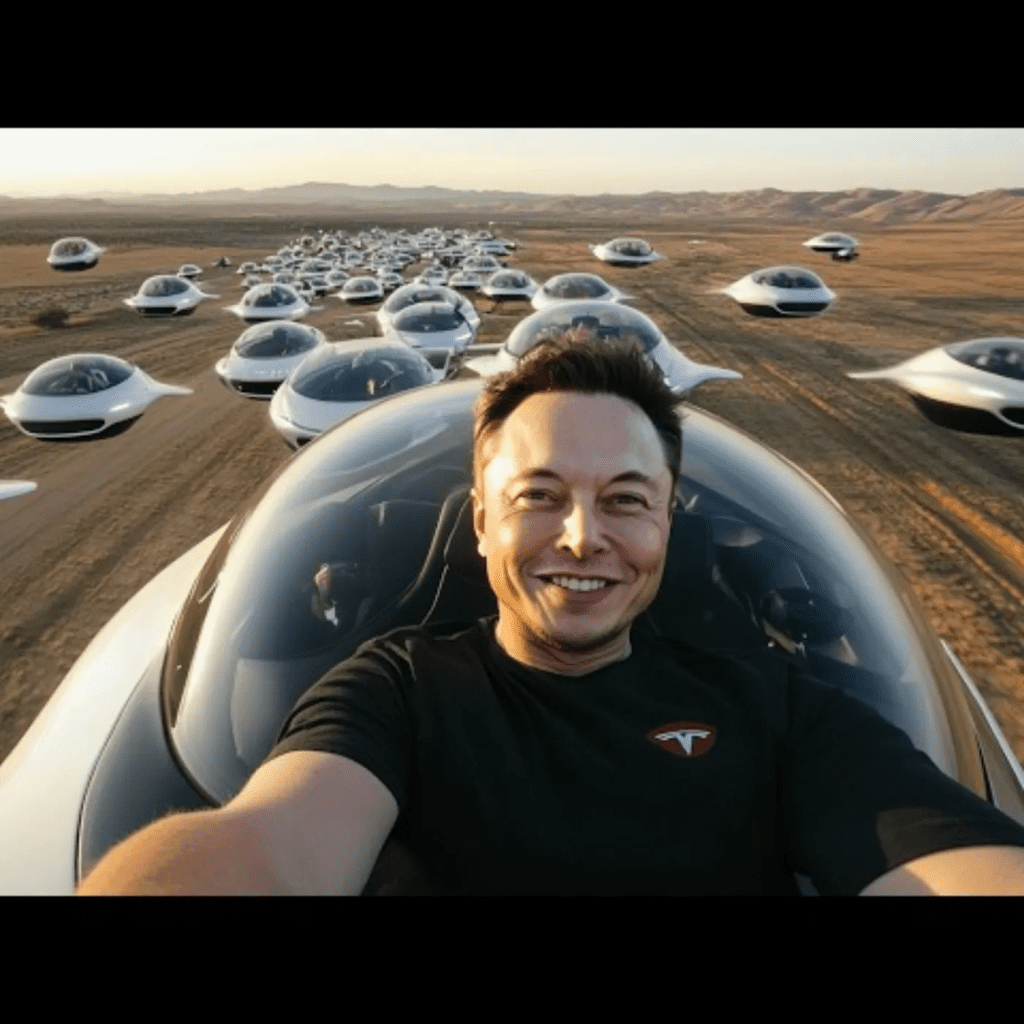
For years, the idea of flying cars has been a staple of science fiction, but Elon Musk, the visionary CEO of Tesla and SpaceX, has once again shocked the world with an announcement that could redefine the future of transportation.
Elon Musk Reveals the World’s First Flying Tesla Prototype Set for Space — A Revolutionary Innovation Stuns the World!
In a jaw-dropping revelation, Musk unveiled Tesla’s first-ever flying car prototype—an innovation that not only aims to revolutionize urban mobility but also has the potential to reach space.
Could this be the dawn of a new transportation era, or is Musk simply raising expectations beyond what’s possible?
This article explores:
- The technology behind Tesla’s flying car
- How it fits into SpaceX’s broader vision for space travel
- Challenges and opportunities in bringing this concept to life
- The potential impact on industries like aviation, transportation, and space exploration
Let’s dive into one of the most groundbreaking innovations of the century.
The Birth of Tesla’s Flying Car: A Revolution in Motion
From Electric Cars to Flying Vehicles
Tesla has always been at the forefront of cutting-edge technology. Since its inception, the company has transformed the automotive industry with electric cars, Autopilot AI, and advanced battery technology.
But Musk has never been one to settle.
For years, he hinted at the idea of a flying Tesla, often making remarks about his admiration for futuristic transportation. However, few believed it was more than a sci-fi dream.
Until now.
A Game-Changing Prototype
The Tesla Flying Car Prototype — which Musk dubbed the “Tesla Model A” — is a marvel of engineering.
Some of its stunning features include:
- Vertical Takeoff and Landing (VTOL): No need for long runways—this car can lift off straight up, like a drone or helicopter.
- Next-Gen Electric Propulsion: Powered by Tesla’s latest battery tech, offering sustainable flight without fossil fuels.
- Autonomous Flight Capabilities: Equipped with Tesla’s advanced AI, enabling self-flying functionality.
- Zero-Gravity Thrusters: Borrowing from SpaceX tech, it includes mini thrusters for added stability and maneuverability.
- Space-Ready Design: Musk claims this car is being developed with space travel in mind.
This isn’t just about flying over cities—it’s about exploring new frontiers.
How Does Tesla’s Flying Car Work?
The Power of Electric Flight
Unlike traditional aircraft that rely on combustion engines, the Tesla Model A uses an advanced electric propulsion system.
The battery pack is integrated into the car’s structure, similar to Tesla’s EV lineup. It utilizes high-speed rotating fans and mini thrusters inspired by SpaceX’s Falcon rockets.
These innovations allow for both smooth city travel and the potential for low-orbit space flights in the future.
AI-Driven Navigation
Tesla’s Autopilot has already changed how cars operate, but flying presents new challenges.
The Tesla Model A will feature:
- LiDAR sensors for precise navigation
- Collision avoidance AI for mid-air safety
- Fully autonomous flight mode
With these advances, flying Tesla cars could eliminate human error — one of the leading causes of accidents today.
From Earth to Space: The SpaceX Connection
A Flying Car That Can Reach Space?
Musk has long aimed to merge Tesla and SpaceX technologies, and the Tesla Model A may be the perfect bridge.
Exciting possibilities include:
- Orbital Travel: Could a future version be used for space tourism?
- Lunar Exploration: Could flying Teslas be adapted for use on the Moon or Mars?
- Advanced Air Mobility: The Tesla-SpaceX tech fusion could lead to the first mass-produced space vehicles.
Musk’s vision extends far beyond urban travel—he wants to revolutionize interplanetary mobility.
Challenges & Roadblocks to Flying Teslas
While the Tesla Model A is exciting, challenges remain:
1. Safety Concerns
Flying vehicles bring new risks:
- Mid-air collisions
- Power failures
- Cybersecurity threats
Extensive safety testing will be required before launch.
2. Government Regulations
Air traffic laws are not yet ready for flying cars. Issues include:
- Licensing requirements
- Air traffic control systems
- Legal liabilities
Governmental approval is essential before mass production.
3. Infrastructure & Cost
Flying cars need:
- Urban landing zones
- Fast-charging stations
- Cost-effective models
Without these, mainstream adoption could take years.
The Future of Transportation: Are Flying Cars Inevitable?
Many skeptics doubt flying cars will go mainstream, but Tesla has defied expectations before.
Why flying cars could become common:
- Urban congestion is increasing
- AI and automation are improving
- Electric propulsion is sustainable
Just like electric cars once seemed unrealistic, flying cars could follow a similar trajectory.
Conclusion: Is Tesla’s Flying Car the Future of Mobility?
Elon Musk has once again pushed the boundaries of innovation, unveiling a prototype that could change both Earthly and space travel forever.

The Tesla Model A is more than just a car — it represents a new frontier in mobility, blending Tesla’s automotive genius with SpaceX’s aerospace mastery.
While major hurdles remain, one thing is clear:
The future of transportation is no longer limited to roads.
Musk’s vision is propelling us into the sky — and beyond.


